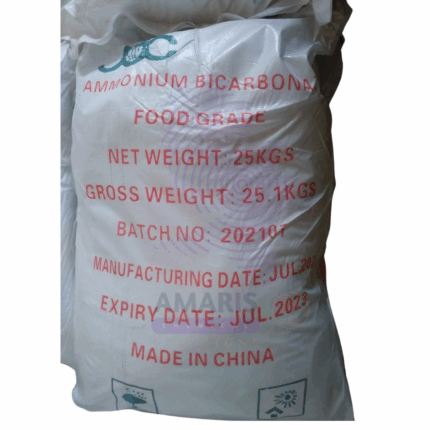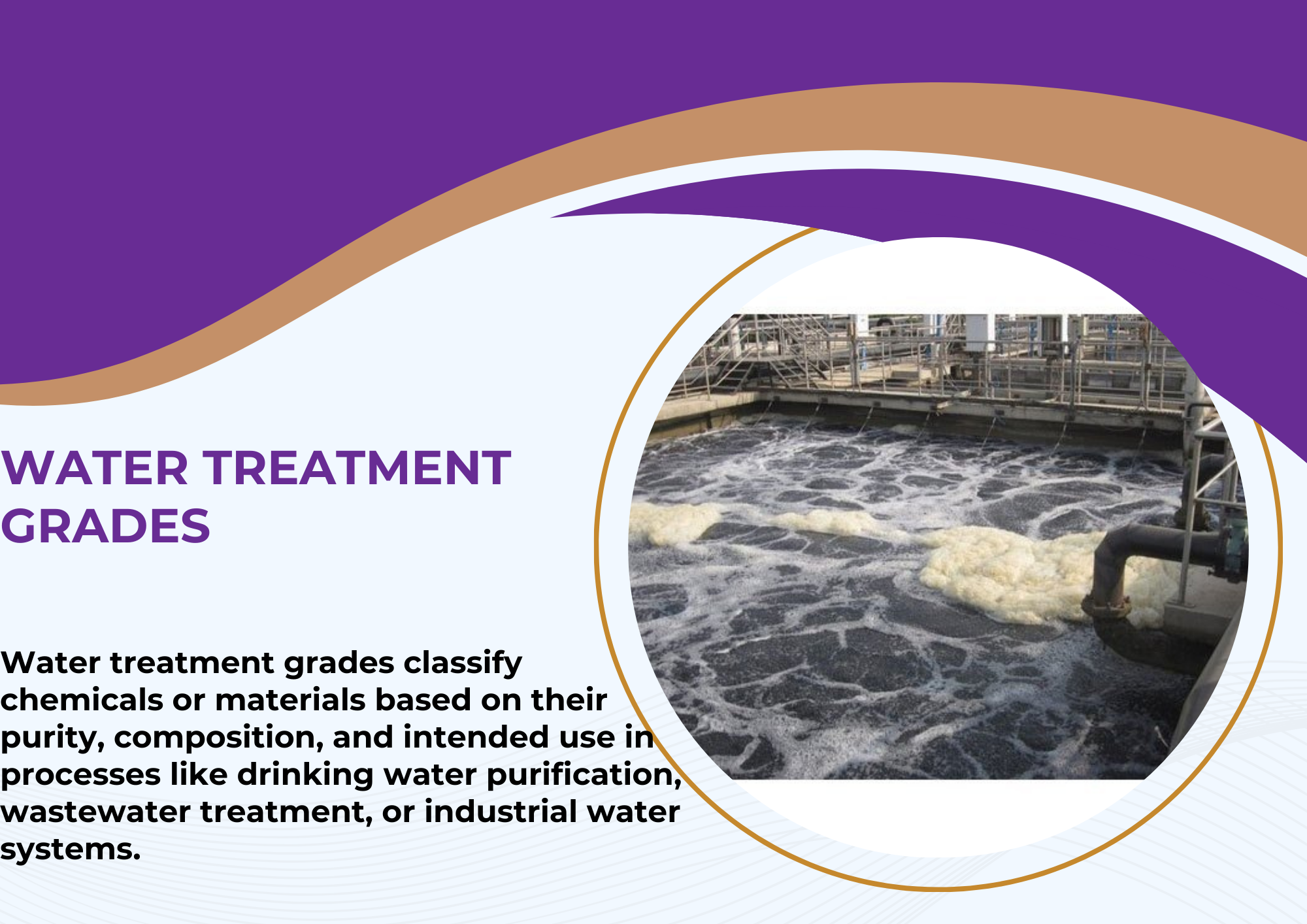
Ammonium Chloride
$ 2.00 Original price was: $ 2.00.$ 1.55Current price is: $ 1.55.
Ammonium chloride is a white crystalline salt with a salty, slightly acidic taste. It is highly soluble in water and is widely used in various industrial, agricultural, and pharmaceutical applications. It acts as a nitrogen source in fertilizers, a flux in metalworking, and an expectorant in medicine. Its versatility and relatively low toxicity make it an important compound in multiple sectors.
Ammonium Chloride
Primary Uses
Agriculture – Fertilizer Component
- Used extensively as a nitrogen fertilizer, particularly in rice and wheat cultivation, providing essential nitrogen and chloride ions for plant growth.
- Favored in acidic soils where chloride is a beneficial micronutrient.
- Often combined with other fertilizers to improve nutrient balance.
Pharmaceuticals – Expectorant and Remedy
- Utilized as an expectorant in cough medicines, aiding in the loosening and expulsion of mucus from the respiratory tract.
- Used in some electrolyte replenishing formulations.
Industrial Applications
- Employed as a flux in metalworking, especially for soldering, galvanizing, and tinning processes, where it cleans metal surfaces by removing oxides.
- Acts as a component in dry cell batteries to provide an electrolyte.
- Used in the production of textile dyes and in tanning leather.
Food Industry
- Sometimes used as a food additive (E510) and acidity regulator in certain regional food products.
- Added in small quantities in licorice confectionery as a flavor enhancer.
Secondary Uses
Laboratory Uses
- Used as a buffer or reagent in various chemical analyses and syntheses.
- Employed in preparation of other ammonium salts.
Cosmetics and Personal Care
- Occasionally used in hair care products as a pH adjuster and to improve texture.
Electronics
- Used in the manufacture of some conductive inks and electrolytes for batteries.
Miscellaneous
- Used in cough remedies in veterinary medicine.
- Applied in some cleaning agents and detergents.
1. Basic Identification Attributes
- Chemical Name (IUPAC): Ammonium chloride
- Common/Trade Names: Ammonium chloride, sal ammoniac
- CAS Number: 12125-02-9
- HS Code: 2811.10.00
- Molecular Formula: NH4Cl
- Synonyms: Sal ammoniac, ammonium muriate, ammonium monochloride
2. Physical & Chemical Properties
- Physical State: White crystalline powder or granules
- Color & Odor: White, odorless
- Melting Point: 338°C (sublimes without melting)
- Boiling Point: Sublimes at ~520°C
- Density: ~1.53 g/cm³
- Solubility: Highly soluble in water (~37.2 g/100 mL at 20°C)
- pH Level: Slightly acidic (~5.5 aqueous solution)
- Vapor Pressure: Negligible at room temperature
- Flash Point: Non-flammable
- Stability: Stable under normal conditions, decomposes at high temperatures
3. Safety & Hazard Attributes
- Hazard Class (GHS): Not classified as hazardous, but can be irritant
- NFPA Ratings: Health 1, Flammability 0, Reactivity 0
- Exposure Limits: OSHA PEL – 10 mg/m³ (respirable dust)
- Reactivity: Stable under normal conditions
- Incompatible Materials: Strong bases, strong oxidizers
4. Storage & Handling Attributes
- Storage Conditions: Store in a cool, dry, well-ventilated place away from incompatible materials
- Container Type: Plastic or metal containers with tight seals
- Shelf Life: 3–5 years under proper storage
- Special Handling: Avoid dust formation and inhalation; handle in well-ventilated areas
5. Regulatory & Compliance Attributes
- Regulatory Status: Approved for use in food (E510), pharmaceuticals, and agriculture
- Transportation: Not classified as hazardous
- Waste Disposal: Dispose according to local regulations; non-hazardous
6. Environmental & Health Impact
- Ecotoxicity: Low aquatic toxicity but excessive release may affect aquatic life due to chloride content
- Persistence: Does not bioaccumulate, dissolves and disperses readily
- Carcinogenicity: Not classified as carcinogenic
Biodegradability: Inorganic salt; not biodegradable but environmentally stable
-
Safety Handling Precautions
- PPE: Wear gloves, eye protection, and dust mask to avoid inhalation and contact.
- Handling: Avoid generating dust and use adequate ventilation.
- Storage: Keep container tightly closed and dry to prevent clumping.
- Hygiene: Wash hands after handling; avoid eating or drinking in handling areas.
First Aid Measures
- Inhalation: Move to fresh air immediately. Seek medical attention if symptoms develop.
- Skin Contact: Wash with soap and water. Seek medical care if irritation occurs.
- Eye Contact: Rinse with plenty of water for 15 minutes. Get medical help if irritation persists.
- Ingestion: Rinse mouth and drink water. Seek medical attention if large amounts swallowed.
Firefighting Measures
- Fire Hazards: Non-flammable and non-combustible.
- Extinguishing Media: Use water spray, foam, or dry chemical for surrounding fires.
Special Precautions: None specific; avoid inhaling dust or decomposition gases if exposed to high heat.


 Preservatives(food)
Preservatives(food) Flavor Enhancers
Flavor Enhancers Acidulants
Acidulants Sweeteners
Sweeteners Antioxidants
Antioxidants Colorants(food)
Colorants(food) Nutraceutical Ingredients (food)
Nutraceutical Ingredients (food) Nutrient Supplements
Nutrient Supplements Emulsifiers
Emulsifiers
 Collectors
Collectors Dust Suppressants
Dust Suppressants Explosives and Blasting Agents
Explosives and Blasting Agents Flocculants and Coagulants
Flocculants and Coagulants Frothers
Frothers Leaching Agents
Leaching Agents pH Modifiers
pH Modifiers Precious Metal Extraction Agents
Precious Metal Extraction Agents
 Antioxidants(plastic)
Antioxidants(plastic) Colorants (Pigments, Dyes)
Colorants (Pigments, Dyes) Fillers and Reinforcements
Fillers and Reinforcements Flame Retardants
Flame Retardants Monomers
Monomers Plasticizers
Plasticizers Polymerization Initiators
Polymerization Initiators Stabilizers (UV, Heat)
Stabilizers (UV, Heat)
 Antifoaming Agents
Antifoaming Agents Chelating Agents
Chelating Agents Coagulants and Flocculants
Coagulants and Flocculants Corrosion Inhibitors
Corrosion Inhibitors Disinfectants and Biocides
Disinfectants and Biocides Oxidizing Agents
Oxidizing Agents pH Adjusters
pH Adjusters Scale Inhibitors( water)
Scale Inhibitors( water)
 Antioxidants(cosmetic)
Antioxidants(cosmetic) Emollients
Emollients Fragrances and Essential Oils
Fragrances and Essential Oils Humectants
Humectants Preservatives
Preservatives Surfactants(cosmetic)
Surfactants(cosmetic) Thickeners
Thickeners UV Filters
UV Filters
 Fertilizers
Fertilizers Soil Conditioners
Soil Conditioners Plant Growth Regulators
Plant Growth Regulators Animal Feed Additives
Animal Feed Additives Biostimulants
Biostimulants Pesticides (Herbicides, Insecticides, Fungicides)
Pesticides (Herbicides, Insecticides, Fungicides)
 Active Pharmaceutical Ingredients (APIs)
Active Pharmaceutical Ingredients (APIs) Excipients
Excipients Solvents(pharmaceutical)
Solvents(pharmaceutical) Antibiotics
Antibiotics Antiseptics and Disinfectants
Antiseptics and Disinfectants Vaccine Adjuvants
Vaccine Adjuvants Nutraceutical Ingredients (pharmaceutical)
Nutraceutical Ingredients (pharmaceutical) Analgesics & Antipyretics
Analgesics & Antipyretics
 Analytical Reagents
Analytical Reagents Solvents(lab)
Solvents(lab) Chromatography Chemicals
Chromatography Chemicals Spectroscopy Reagents
Spectroscopy Reagents microbiology-and-cell-culture-reagents
microbiology-and-cell-culture-reagents Molecular Biology Reagents
Molecular Biology Reagents Biochemical Reagents
Biochemical Reagents Inorganic and Organic Standards
Inorganic and Organic Standards Laboratory Safety Chemicals
Laboratory Safety Chemicals Specialty Laboratory Chemicals(Special Laboratory Equipment)
Specialty Laboratory Chemicals(Special Laboratory Equipment)
 Demulsifiers
Demulsifiers Hydraulic Fracturing Fluids
Hydraulic Fracturing Fluids Scale Inhibitors(oil)
Scale Inhibitors(oil) Surfactants(oil)
Surfactants(oil) Drilling Fluids
Drilling Fluids
 Dyes and Pigments
Dyes and Pigments Bleaching Agents
Bleaching Agents Softening Agents
Softening Agents Finishing Agents
Finishing Agents Antistatic Agents
Antistatic Agents
 Admixtures
Admixtures Waterproofing Agents
Waterproofing Agents Sealants and Adhesives
Sealants and Adhesives Curing Compounds
Curing Compounds Concrete Repair Chemicals
Concrete Repair Chemicals Anti-Corrosion Coatings
Anti-Corrosion Coatings
 Surfactants(cleaning)
Surfactants(cleaning) Builders
Builders Enzymes
Enzymes Solvents (Cleaning)
Solvents (Cleaning) Fragrances
Fragrances
 Electronic Chemicals
Electronic Chemicals Catalysts
Catalysts Lubricants
Lubricants Photographic Chemicals
Photographic Chemicals Refrigerants
Refrigerants Automotive chemicals
Automotive chemicals Pyrotechnic Chemicals
Pyrotechnic Chemicals
 Biodegradable Surfactants
Biodegradable Surfactants Bio-based Solvents
Bio-based Solvents Renewable Polymers
Renewable Polymers Carbon Capture Chemicals
Carbon Capture Chemicals Wastewater Treatment Chemicals
Wastewater Treatment Chemicals
 Pigments
Pigments Solvents(paint)
Solvents(paint) Specialty Coatings
Specialty Coatings Binders/Resins
Binders/Resins Additives
Additives Driers
Driers Anti-Corrosion Agents
Anti-Corrosion Agents Functional Coatings
Functional Coatings Application-Specific Coatings
Application-Specific Coatings
 Fresh Herbs
Fresh Herbs Ground Spices
Ground Spices Whole Spices
Whole Spices Spice Blends
Spice Blends Dried Herbs
Dried Herbs
 Leavening Agents
Leavening Agents Dough Conditioners
Dough Conditioners Flour Treatments
Flour Treatments Fat Replacers
Fat Replacers Decoratives
Decoratives Preservatives(baking)
Preservatives(baking)
 Plasticizers & Softeners
Plasticizers & Softeners Reinforcing Agents
Reinforcing Agents Adhesion Promoters
Adhesion Promoters Vulcanizing Agents
Vulcanizing Agents Antidegradants
Antidegradants Blowing Agents
Blowing Agents Fillers & Extenders
Fillers & Extenders Accelerators & Retarders
Accelerators & Retarders


























